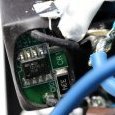Leaderboard
Popular Content
Showing content with the highest reputation on 09/17/19 in all areas
-
There was a kernel driver internal API change a few releases back that I missed, and md/unraid was doing something that's not valid now. I noticed this and put fix in upcoming 6.8 and gave to someone who could reproduce the corruption. Has been running far longer than it ever did before, so I think is safe for wider testing. Back-ported change to 6.7.3-rc3 and also updated to the latest 4.19 kernel patch release, because, why not?3 points
-
We may have got to the bottom of this. Please try new version 6.7.3-rc3 available on next branch.3 points
-
This looks like it's going to be something I can't easily add support for without access to the card. So I ordered an SAS 9207-8i - same as yours but with internal ports. It'll be delivered tomorrow, I'll be able to plug it into my backup server sometime later this week.1 point
-
I got my gpu passthrough but not onboard audio. I'll have to use audio from my GPU but I hate the audio cord that sticks out of my monitor.... darn it!1 point
-
You can get LSI cards from many different vendors on E-bay and the cost is quite reasonable-- <$90US. Read the offers carefully and vet the vendors with care as there are some 'bad' actors selling counterfeit cards. I believe that many of the LSI cards that Johnnie listed are discontinued as that should be a clue when someone is selling 'new' ones. If you are uncomfortable with flashing (or crossflashing), some vendors will provide cards with it already done. Be care on E-bay with the LSI Model numbers. Some vendors will list the card model number based on the hardware but the LSI part number also refers to the software/firmware installed on the card and LSI RAID software/firmware versions may not work with Unraid.1 point
-
actually even for the appdata on cache, there will be 2 setup 1. map directly to /mnt/cache/xxx 2. map to user share /mnt/user/xxx with setup "use cache disk" only by testing on this 2 setup, we might be able to isolate if the issue is fuse related or not1 point
-
Any LSI with a SAS2008/2308/3008/3408 chipset in IT mode, e.g., 9201-8i, 9211-8i, 9207-8i, 9300-8i, 9400-8i, etc and clones, like the Dell H200/H310 and IBM M1015, these latter ones need to be crossflashed.1 point
-
The Marvell chip sets have been an issue for quite some time. (For more information, Google Unraid.net Marvell 88SE9230 Chipset ) You can try turning off any virtualization options in the BIOS. This thread gives more details: You should also check the spec's on that power supply. (You may have to physically look for the ratings on the units as I could not find any in the specs.) There are very few folks using 250W supplies with Unraid. The +12V rails are usually the problem. The recommendation for Unraid use is that the PS be the single rail type. (Commonly, the less expensive PS's will be dual rail with the second buss being dedicated to the GPU card.) You also have to be concerned about total power consumption rating. (I have seen a PS rating where, say, a 300 watt supply will have a 24A rating on the +12V busses which only leave 12W for everything else.) You need between 8-to-12 ampere rating on the +12V buss to allow for the peak starting current when all of the drives spin up simultaneously.1 point
-
Run a memtest and after re-format pool to start over, if there aren't RAM issues and problems persist post new diags at first sign.1 point
-
Ok. - Keeping the VM config in XML view did the trick, and I was able to boot directly off of the NVME SSD w/o having to enter the boot mgr. - I also, per your recommendation, went back to only 10 cores enabled and left CPU0 & HT6 unchecked. Not sure if that was causing some frame drops in the most recent game I'm playing, but it was worth a shot.1 point
-
Device: 06:00.0 Class: 0200 Vendor: 8086 Device: 10fb SVendor: 8086 SDevice: 0006 Rev: 01 Pls note, it is not Intel original.1 point
-
I figured this out: a few months ago i installed pi-hole docker and decided to just set my router's primary DNS to the pi-hole docker IP so that everything in the house is covered. Well, with unRAID set as DHCP client it picked up those DNS settings by default and the traffic was following a crazy route i guess. Once i specifically set unRAID's DNS entries, things came right back. thanks for your help!1 point
-
@airfish, in addition to what @Taddeusz, make sure that: The i915 driver is loaded (https://github.com/jlesage/docker-handbrake/blob/master/README.md#unraid-1). /dev/dri is exposed. This is done by editing container's settings and adding a "Device", where the value is "/dev/dri". The second point is what is missing according to the log. I don't know if it's because it's not configured in container's settings or if because the device is not available due to your unsupported cpu...1 point
-
Plex Media Server 1.17.0.1709 is available in the Beta update channel NEW: (Transcoder) Update to current upstream ffmpeg (Transcoder) Support for hardware transcoding on Linux with Intel 9th-gen processors (Transcoder) Support for VC-1 hardware decoding on supported platforms (Transcoder) Support for hardware decoding on Linux with Nvidia GPUs (Transcoder) Support for zero-copy hardware transcoding on Linux with Nvidia GPUs (Transcoder) Support for zero-copy hardware transcoding of interlaced media https://forums.plex.tv/t/plex-media-server/30447/2861 point
-
The URLs missing is because of the multitude of mistakes the guys were making on that field, ca is now filling it out for them. Hit apply fix on each of them The update available constantly is due to a change at dockerhub. Install or update the auto update plugin which will patch the OS for this Sent from my NSA monitored device1 point
-
Don't mess with mapping folders in those locations. To test, just edit the crontab file under your config folder and restart the container. Make sure you have more than 1 minute between your upcoming script run time and restarting the container.1 point
-
Hello from Australia. I'd happily get a couple as well. I literally am a newbie to unraid (only started using it with in the past 2 weeks - free licensing until today), to VM two of my servers (Mail and Web - has some minor issues getting them working but, seems they are working now. I actually bought the license today in my (now deceased) mum's name, for something to remember her by. She wasn't into computers but, as I more than likely will need to interact with either Unraid or one of the servers, it will be a happy reminder of her. Sorry if you have lost a loved one and this has bought back memories, but this is how I feel. If I ever did get another server - for anything - I think I'd name it after her, and possibly do what Linus did for iJacklyne (I know, I know. not right), and get a front sticker made in her memory as well. Cheers. Oh, and Happy belated birthday unraid :). And Congrats to the winners!1 point
-
My home network mostly runs on 10Gbit ethernet cables, of which the unraid is even connected to 2 NICs using aggregation of the 2. My unraid server has 32GB of DDR4 in it, of which it barely ever uses more than a third. Which surprised me, but that's another topic. So; I'd prefer my RAM to be always used to its max, and therefore I'd like to either have a RAM-disk set to (for example) 20GB of the free RAM left at all times, or have the OS arrange that maxing it out automatically for me. I'd say having RAM be used for I/O of data-streams is highly preferred over using the SSD storage, while unraid's slackware does not seem to do much caching in RAM. I've been monitoring the server's RAM usage with netdata over a month.1 point
-
As I understand it, you can do it either way. Begin by making sure that you have a backup copy of both Flash Drives before you do anything. 1-- Copy the contents of the trial license flash drive to the original flash drive drive. Make sure that you delete the trial license .key file from the config directory and copy the original flash drive's .key file to the config directory. Be sure that you run the make_bootable file again as administrator. 2-- Delete the trial license .key from the new boot drive for the new system. Copy the original .key file to the config directory. Reboot the system and go through the procedure to get a new .key file for that new flash drive. (I believe this will mean that the old flash drive's GUID number will now be blacklisted!) It depends a lot on what you want to do. Personally, if I had gotten a name-brand quality flash drive for my trial license testing, I would continue using that for the new system. (Flash drives don't last forever...) It won't make much difference in setup time regardless of which method you chose.1 point
-
You are running the latest version. It's just the author of booksonic that doesn't know how to make a proper release on github. If you check the release tab and check out the 2 commits to master after he made the release, you will see that he changed the code from 1.1 beta to 1.1 release.1 point








